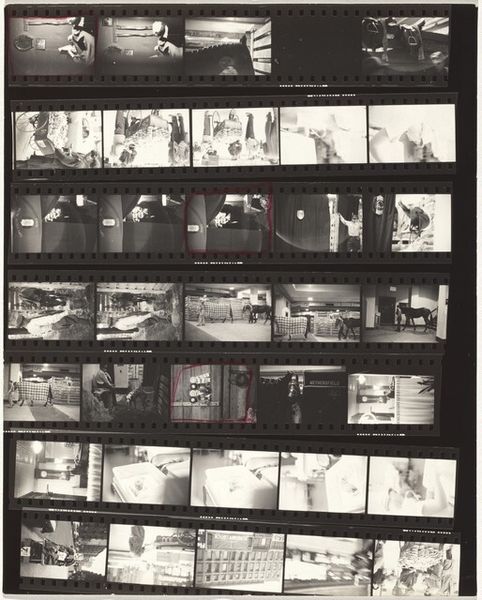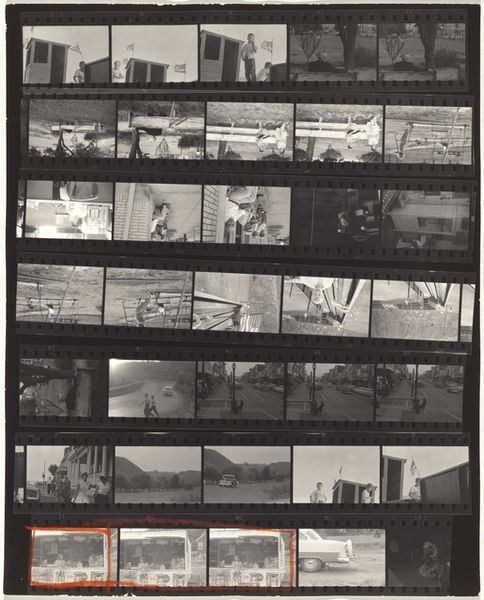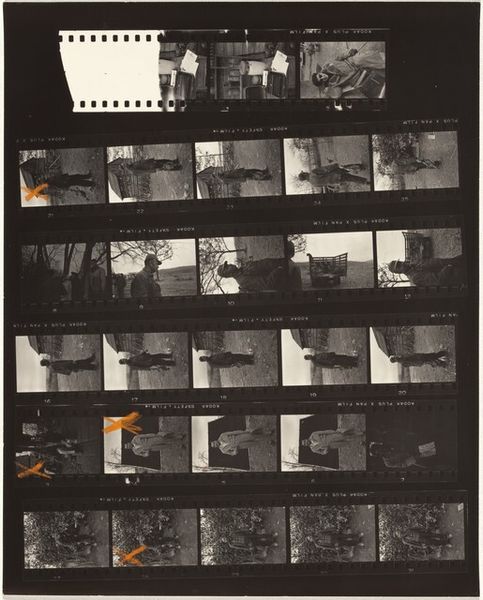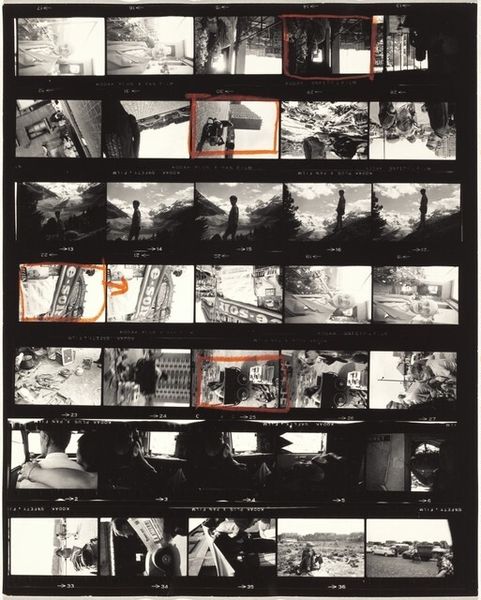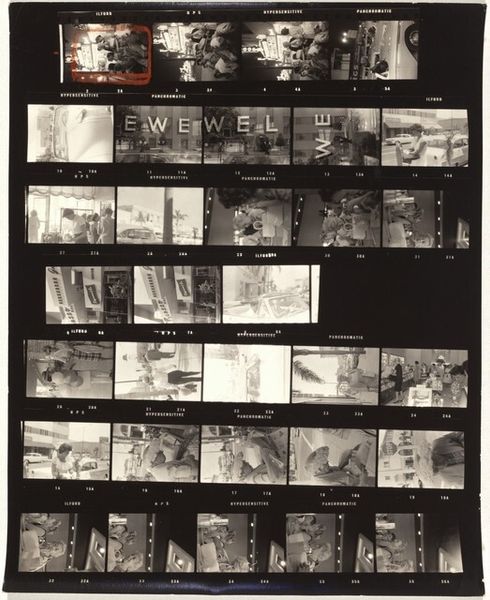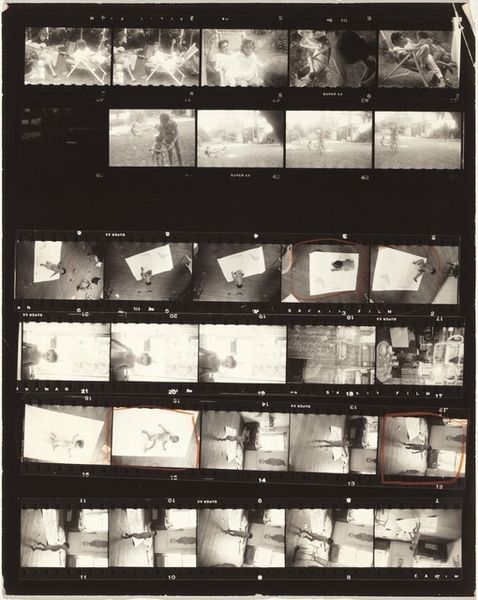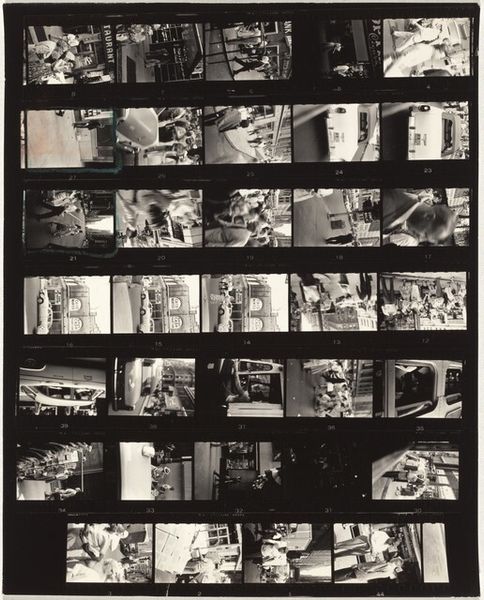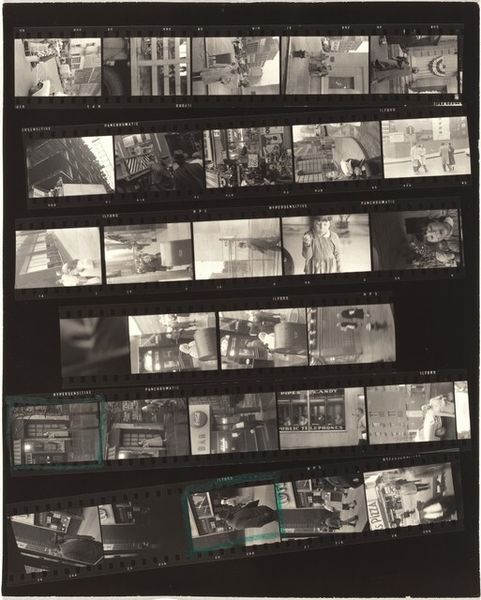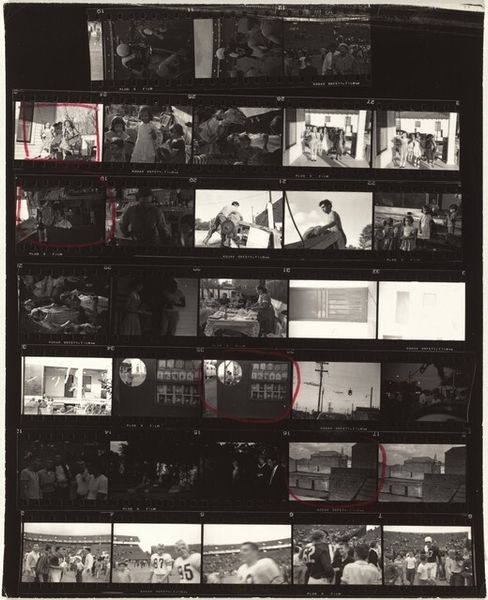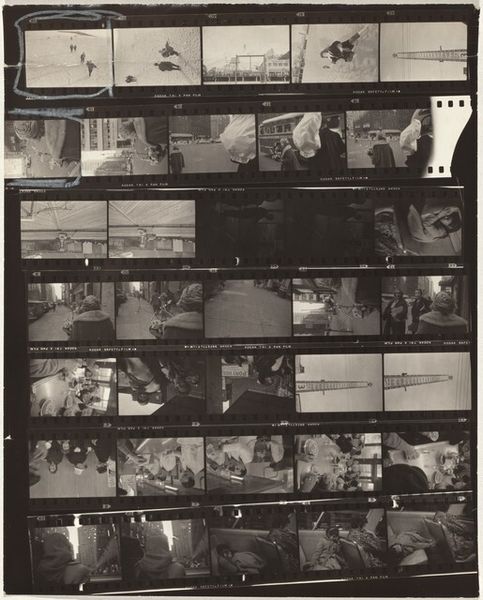
photography, gelatin-silver-print
#
film photography
#
landscape
#
street-photography
#
photography
#
gelatin-silver-print
#
modernism
Copyright: National Gallery of Art: CC0 1.0
Curator: Here we have Robert Frank’s "Provincetown 5," a gelatin silver print from 1958. It’s quite striking, isn't it? Editor: Absolutely. Raw. It hits you with a nervous energy, doesn't it? The grain, the composition—it feels almost accidental, like a glimpse into someone's memory reel. Curator: That "accidental" feel is deliberate, I think. Frank challenged the conventions of documentary photography, rejecting posed perfection for something grittier. He aimed to capture an authentic America, flaws and all, a view that wasn't always welcomed. The selection and presentation of his negatives plays a huge role in delivering this specific social and cultural vision. Editor: A rebellious vision. Like a poet spitting out uncomfortable truths instead of pretty verses. The "Do Not Cut" label—was that instruction aimed at himself? Curator: Precisely. It encapsulates Frank’s intention of maintaining each image strip as a whole—preserving the sequence. To give us insight into his creative process. "Provincetown 5" presents us with frames depicting intimate scenes, snapshots, beach life; the banal and beautiful mashed together in monochrome. Editor: It is definitely honest. The light is almost brutal in its starkness. There’s this repeating motif of a chair…or two chairs, under a parasol. Is it abandonment, companionship, surveillance… It makes you want to reach into each individual moment to pull out the larger story that hides inside. It has that voyeuristic tension of peeking into something not entirely meant for public consumption. Curator: Yes, that's it exactly. That's why Frank's work resonated so deeply. The art establishment received Frank with a mix of resistance and excitement, though many quickly regarded Frank's pictures as beacons of modernist thought and creativity. Frank wasn’t just photographing places, but a feeling. The loneliness, the striving…the inherent human condition. His legacy echoes through street photography even today. Editor: So true. He gave other artists permission to feel… awkward in their gaze, honest, to seek after true emotional reality. Even with the camera always sitting between him and the subject, or us and the scene in front of our eyes, that candid sense of true vulnerability hits like a punch. It's less about technical perfection and more about the emotional gut punch, really. Curator: An incredibly fitting ending for a deeper understanding into Robert Frank’s vision and creative output, thanks to your visceral and intuitive insight. Editor: Well, it just proves how even imperfect, raw beauty can stir a reaction if you’re willing to really look. Thanks!
Comments
No comments
Be the first to comment and join the conversation on the ultimate creative platform.


